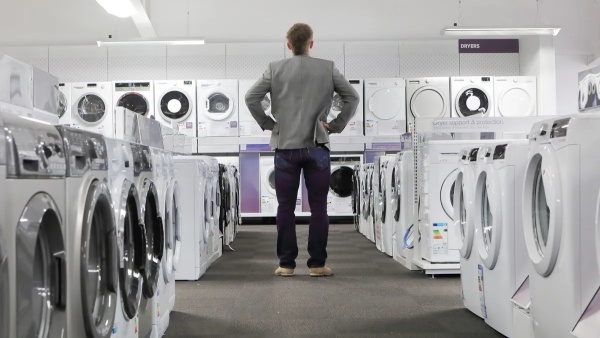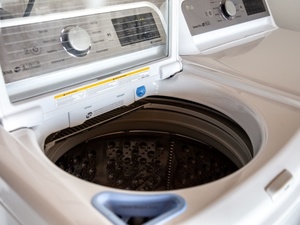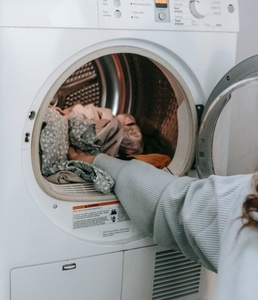
Washing Machine Buying Guide
When it comes time to buy a new washing machine, it can be tough to decide which one is right for you. With all of the different features and brands available, it can be hard to know where to start. This guide will help you understand the different types of washing machines available, as well as some of the important features to consider when making your decision. Armed with this information, you’ll be able to find the perfect washing machine for your home.
Top Load or Front Load?
When you’re in the market for a new washing machine, one of the biggest decisions you’ll have to make is whether to buy a top-loading washer or a front-loading washer. Each type of washing machine has its own pros and cons, so it can be tough to decide which one is right for you. In this blog post, we’ll break down the differences between top-loading and front-loading washers so that you can make an informed decision when it comes time to buy your next washing machine.
Top Loading Machine

Top loading machines offer a variety of wash functions and can also be a more ergonomic design. Because the machine is usually taller and the opening is at the top, loading and unloading the machine is easier on the back. Most top loaders have a built-in dispenser, a soft-close lid, and mid-cycle access in case you forget to remove a stray sock or t-shirt from the hamper. A con however is that this kind of washing machine uses more water because they are designed to fully soak your clothes.
In summary;
Pros:
- With minimum effort, you can load and unload the appliance.
- You can conveniently add more clothes while a cycle is running
- Faster cycles
Cons:
- Requires more water and detergent
- Operates with a higher decibel
- Non stackable
Front Loading Machine

Front-load washers come in a range of capacities and cleaning tasks. The wash drums are bigger than those found in top-loading machines, and they can frequently accommodate up to 20 pounds of clothing. Instead of entirely soaking your clothes, a front load machine spins your items in different directions through a little quantity of water, which is actually gentler for the fabrics. However, the font loading machine is more high maintenance specifically with its gasket rings. Front loaders might be difficult to operate for certain people. Loading and unloading the machine necessitates considerable bending.
In summary;
Pros:
- Ideal for washing a variety of materials, including delicates and large goods.
- Energy-efficient as this uses lesser water
- Can be stacked
Cons:
- Cleaning gaskets and door seals is essential.
- You can’t add more while a cycle is on going
- More bending or hunching is required during loading and unloading.
Fully Automatic vs Semi-Automatic
Fully Automatic Washing Machine
A fully automatic washing machine, as the name implies, runs completely independently of human intervention. All you have to do now is choose your preferred programme. Your washer will take care of the rest. Front-load washing machines include a variety of wash cycles and programmes to fit a variety of clothing kinds. Most come with different programmes for cotton and woolen items, as well as another for delicate, easy-to-care clothing.
Pros:
- Saves time
- Requires a smaller space
- Is gentler on all types of fabric
Cons:
- Longer cycle
- Pricier
- Bulkier and higher maintenance
Semi-automatic Washing Machine
It is less expensive than a fully automated washer and dryer. A Semi Automatic Washing Machine, on the other hand, is not totally automated, as the name implies. It does alleviate some of your workload, but not all of it. This is because its proper operation needs your manual participation.
Pros:
- It is less expensive than a fully automated machine.
- When compared to a fully automatic washing machine, it uses less water.
- Weighs less
Cons:
- Clothes must be manually transferred from the wash tub to the rinse tub.
- A fully automatic washing machine requires more storage.
- In terms of washing quality, it’s not as good as a fully automated machine.
Capacity
Choosing the perfect capacity is the most important aspect that you should consider in choosing your next washing machine. A “medium” washing machine commonly has a maximum capacity of 6kg to 7kg, which is perfect for a family of four. While a washing machine with a maximum capacity of 8kg can run upto 40 shirts at a time. Why is this important? A good way to make your washing machine last longer is paying attention to the maximum capacity, avoiding overloading and overly underloading.
Programs available
Modern washing machines come with an adjustable wash and temperature settings, so you can safely clean more types of clothing. A washer that has a setting to suit your needs is perfect for anyone who likes cleaning their clothes thoroughly but doesn’t want them dry walked on by someone else! With selectable spin speeds from slow-moving water droplets up through high shear salvaged towels; there should be options made just right according to what kind of material being used at any given moment–even a delicate lace.
Tub Material
The tub on less expensive washing machines is constructed of porcelain-coated steel, which can corrode if the porcelain cracks. Look for a plastic tub that will last the life of the machine in higher-end versions. Stainless steel tubs are found in the better versions.
Conclusion
When you are looking to buy a washing machine, it is important to consider all of the factors mentioned in this article. Capacity, type of washer (fully automatic or semi-automatic), and programs available are all important considerations. You should also pay attention to the material of the tub, as this can affect how long your washing machine lasts. With all of these factors in mind, you should be able to find the perfect washing machine for your needs!
Last Updated on
- How to clean standing fan easily - September 24, 2022
- How Long Does a Fan Last? – Electric fan Maintenance Guide - September 23, 2022
- Can electric fans be left on 24 hours a day? - September 23, 2022
